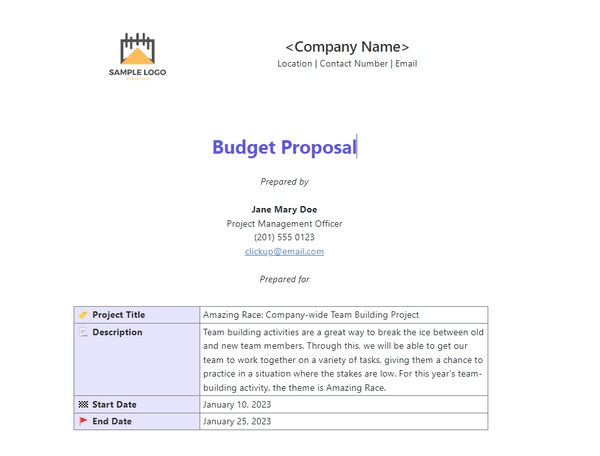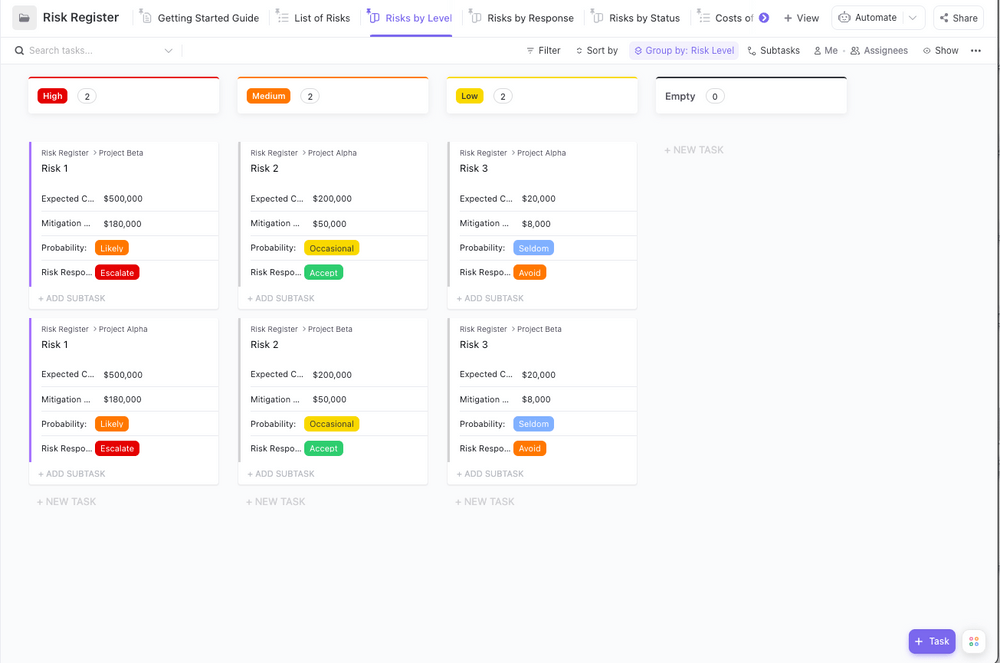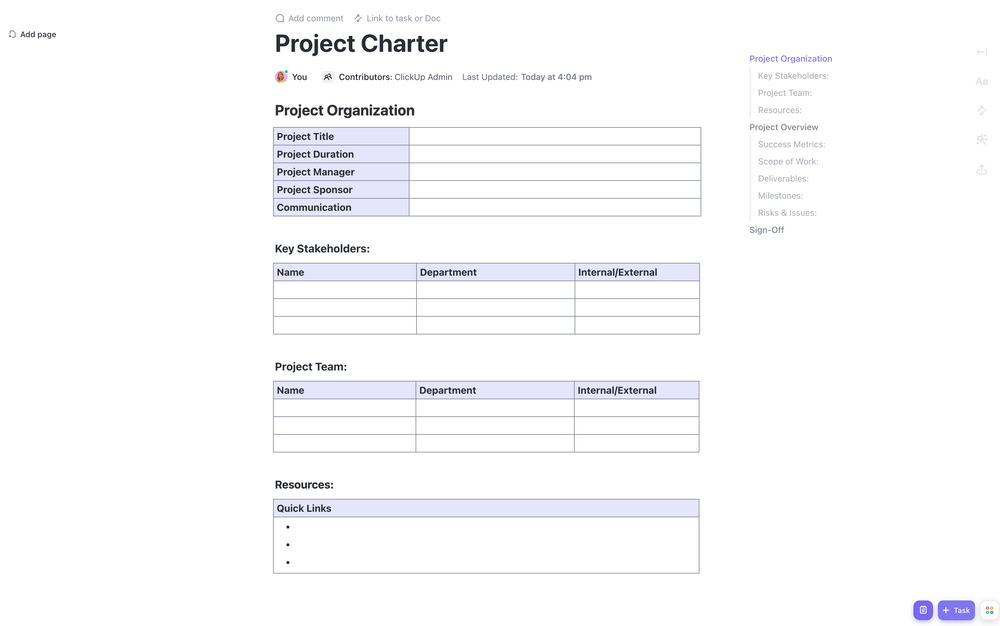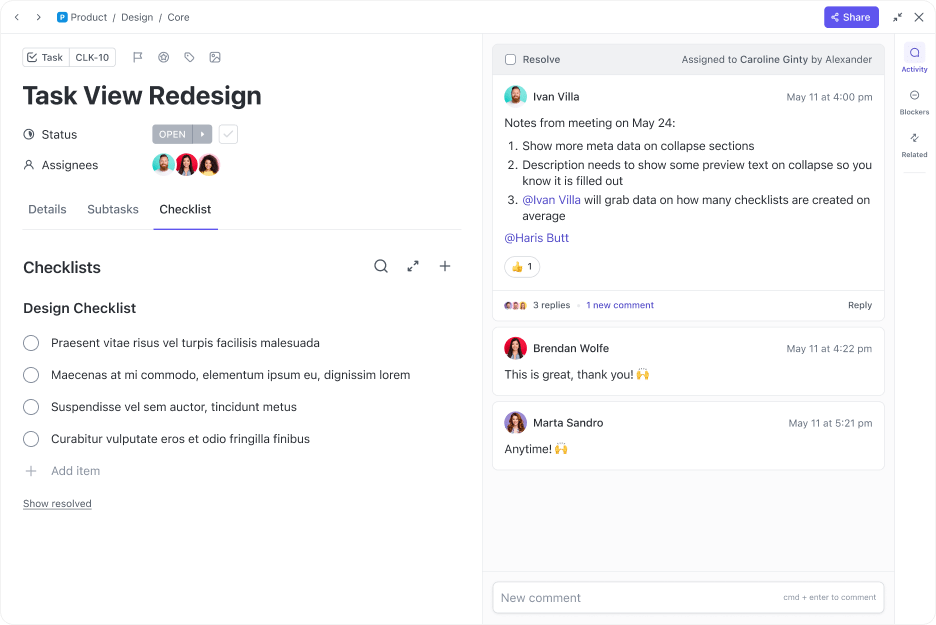

When it comes to complex operations such as projects, it’s easy to get lost in the details and overlook the broader picture. You need a force to oversee, guide, and keep projects on track. Since the project manager is needed most in the field, they often don’t have the available resources to make grand decisions. That’s what the steering committee is for. ✨
Despite the crucial responsibilities of a steering committee, few people are aware of what its members do and why they’re important. This article aims to change that. You’ll read about the steering committee’s purpose, structure, and responsibilities. We’ll also share tips for building and running an effective steering committee.
- What Is a Steering Committee?
- Importance and Purpose of Steering Committees in Project Management
- The Roles and Responsibilities of Steering Committee Members
- Establishing and Running a Steering Committee
- Tips for Running Steering Committee Meetings Efficiently
- Run a Steering Committee Effectively with ClickUp
What Is a Steering Committee?
A steering committee is an advisory board that makes macro-level decisions for projects or organizations, guiding them in the right strategic direction. 🧭
The committee usually consists of diverse individuals who don’t participate in the day-to-day activities but have a high stake in the project or organization’s success. Those may include business managers, subject-matter experts, and even end users.
There are many types of steering committees. Some of them include:
- Executive committees
- Project-steering committees
- Privacy committees
- Non-profit committees
The roles and responsibilities of steering committees differ based on the programs they govern. In general, they meet every once in a while to discuss crucial topics and decide on the next best steps. They collaborate with project managers, who are responsible for implementing the committee’s decisions.
Pro tip: Whether you’re planning a steering committee meeting or coordinating changes for project success, use project management software like ClickUp to ensure your efforts are fruitful and efficient. ClickUp makes it easy to collaborate with project teams on any work and saves you all time and effort.
Importance and Purpose of Steering Committees in Project Management
Having a board of authority figures and senior stakeholders to steer project management in the right direction lays the foundation for success. Below, you’ll discover the main benefits steering committees bring:
- Strategic planning: Following one of the key principles of project management, the committee aligns the project with the organization’s goals. By doing so, it contributes to effective resource management and prioritization of tasks, ensuring they work in favor of both parties
- Informed decision-making: The committee comprises individuals with diverse expertise, experience, and perspectives. This variety allows them to produce optimal solutions and strategies that benefit everyone
- Enhanced communication: It’s the committee’s role to ensure all relevant stakeholders are informed about the project’s plan and progress. That way, it fosters a culture of transparency and trust
- Adaptability to changes: With their risk mitigation strategy and combined expertise, steering committees are apt at resolving conflicts. They can also make quick decisions to adjust the project in light of new information
- Performance improvement: By governing the project and offering expert support in times of need, steering committees increase efficiency and project quality
Bonus read: Check out the best project governance templates for your team!
The Roles and Responsibilities of Steering Committee Members
Steering committees vary depending on the nature of the organization or initiative. They may include both internal and external collaborators serving different functions, such as:
- Executives: High-level leaders guiding the organization’s strategy
- Senior managers: Leaders mediation between executives and departments
- Business managers: Individuals who represent the business objectives of specific units
- Department heads: Individuals leading department employees who are involved in the project
- Subject-matter experts: Authority figures in their area who have specialized knowledge and provide guidance to ensure fact-based decision-making
- Senior suppliers: Individuals managing the supply chain and external participants
- Investors: Individuals who provide financial support for the initiative or organization
- Customer or client representatives: Individuals who derive value from the outcome and are responsible for articulating user needs and expectations
The project-steering committee is engaged at every project level. Its five main responsibilities include:
1. Defining outcomes and scope
The steering committee’s first decision concerns ideal project outcomes. This decision specifies the purpose of the entire operation and guides future decisions.
After that, the committee defines the project scope—the resources, deliverables, limitations, and any other factors crucial for project planning. It also sets project goals, which are ambitious but also realistic. In the end, they define project metrics that indicate its success. ⭐
Pro tip: The ClickUp Scope of Work Template provides a solid framework for outlining the basics of any project. It streamlines project progress planning and communication with stakeholders.

2. Setting or approving timelines and budgets
As part of the project’s scope, the committee deliberates the resources needed to execute the project, such as capital, personnel, and time. 💰
The project managers usually propose the initial budget and project timeline, but the committee’s experts provide advice and are responsible for approving the final project budget and timeline. The committee also has to approve any change requests before they take effect.
Pro tip: Project managers can use the ClickUp Budget Proposal Template to sum up the expected costs for an initiative and request funding from the project-steering committee.

3. Evaluating and mitigating risk
Steering committees analyze project plans to detect potential problems before they occur. They then create a contingency plan to address those problems. ⚠️
The plan helps the project team prepare for emergency or unplanned situations. It also gives them instructions on how to react and deal with the consequences. Besides reducing safety risks, this proactive approach helps prevent major setbacks and allows projects to stay on schedule.
Pro tip: Get a better understanding of potential project risks and their impact with the ClickUp Risk Register Template. Keep all information in one place and create a risk mitigation plan efficiently.

4. Monitoring project execution
The project manager is the one responsible for assigning tasks and monitoring the progress of the project team. At regular intervals, they give the steering committee regular updates on the project’s progress and status. The manager doesn’t focus on details but rather paints an overall picture of the project’s standing, specifically its adherence to the deadlines and budget. 👀
The steering committee then decides whether to intervene and if yes, what steps the team should take. The committee also updates other stakeholders on the project’s crucial milestones.
5. Providing advice and support
Minor everyday problems are the project manager’s to solve. They can mediate conflicts and reallocate resources on their own. In case they can’t identify a viable solution or run into bigger bottlenecks, the project manager can turn to the steering committee.
Understanding the importance and arduousness of the manager’s role, the committee supports, advises, and encourages them throughout the project’s life cycle. 🤝
Establishing and Running a Steering Committee
Considering the crucial part the steering committee will play within your organization, you should invest significant time and effort into its establishment. If your next task is forming and managing a steering committee, read the guidelines below and familiarize yourself with the process.
1. Setting goals and creating a charter
The first step is to define the mission and scope of the steering committee, tackling information such as:
- Goals and the means of achieving them
- Roles and expectations
- Limitations
- Operating standards
The scope establishes a governance framework to navigate upcoming steering committee work and emerging challenges. You should also create a project communication plan to describe how the committee will make decisions, how board members will receive information, and how they’ll seek input from external collaborators.
In the end, craft a formal steering committee charter to make these decisions official. ✒️
Pro tip: Start with the ClickUp Project Charter Template and customize it to meet your needs. You’ll have a professional steering committee charter in no time!

2. Assembling the dream team
To determine who should participate, consider the steering committee’s scope. Depending on the size of the project or organization, select five to eight individuals for the group. Make sure the board represents all departments involved in the project and consists of individuals with diverse skills and backgrounds. Prioritize those with the most field experience and those who can work well in a team.
It’s important to single out an individual who will act as the chairman of the group. This person will lead the steering committee, ensuring it operates fairly, harmoniously, and in line with the charter despite any project management challenges that may arise. Their job will also be to expedite the decision-making process without rushing it. ⏩
When you assemble the team, inform all members of the committee’s purpose and scope. Everyone must understand what their role entails and what’s expected of them. Educate them on the importance of being committed to their roles, attending meetings regularly, and communicating openly. In case some members haven’t served on a steering committee before, provide appropriate training.
Pro tip: Assembling and regulating a steering committee is simpler with the ClickUp Board Roster Template. This handy tool lets you keep track of board members, their contact information, and meetings.

3. Conducting regular meetings
Steering committees should meet regularly to address any problems timely and keep projects on schedule. When everything is running according to plan, frequent meetings might not be necessary. It’s important to recognize when the need for discussion exists and when the members could use their time on more pressing issues.
For example, you can hold regular meetings when the project reaches its milestones. If any issue arises, you can arrange an ad-hoc meeting.
Every steering committee session must have a clear purpose and agenda. That may include progress updates, brainstorming sessions, planning future work, and any other discussion necessary for the given moment. The meetings should also involve the project manager, who will brief the committee on the most recent and notable project developments. 📢
Pro tip: Whether you’re running an initial project meeting or an emergency meeting, plan it with the ClickUp Meetings Template. This comprehensive template allows you to schedule meetings, invite committee members, and create agendas with ease.

Bonus read: Learn about the nine common meeting types!
Tips for Running Steering Committee Meetings Efficiently
Although steering committees are small, their members have tight schedules, so coordinating them is often a difficult endeavor. You must find a time that works for everyone. You must also run meetings efficiently so as not to waste time. Most importantly, to fulfill the committee’s purpose, you must implement its decisions into the project workflow.
Thankfully, technology can make your job easier. A project management tool such as ClickUp can facilitate seamless collaboration between the steering committee and the project team.
ClickUp’s Project Management Suite allows you to build a hierarchy to organize all work and documentation under one roof. Create a separate Space for the steering committee and set permissions so only members can view it. You can also manage meetings in your ClickUp Workspace with ease.
Whether it’s a meeting or a work item, add it as a task and delegate it to members. Within each Task view, you can include:
- A description
- Files
- Checklists
- Taggable comments

ClickUp comes with over 15 views, allowing you to visualize and grasp any aspect of the project. The ClickUp Gantt view is ideal for envisioning project timelines, whereas the ClickUp Calendar view lets you track and schedule meetings. The platform also integrates with Zoom and many other video conferencing platforms. You can launch calls directly from meeting tasks!

Now that you have all you need to plan committee meetings, follow the tips below to make the most of them. 🙌
Prepare an agenda
To ensure maximum productivity during a steering committee meeting, create a meeting agenda beforehand. The discussion should focus on the broad picture and high-impact concerns. It should only tackle project details in specific circumstances, such as when the project manager raises a concern. In all other cases, they are unnecessary distractions.
You can use ClickUp Docs to draft your agenda and talking points. To save time, take advantage of the platform’s AI engine, ClickUp Brain. It can proofread your text or even generate meeting outlines in your stead.
Send agenda before the meeting
Steering committee meetings run more smoothly when the participants are aware of the topics discussed. That’s why it’s advisable to share the meeting agenda beforehand. That allows committee members to think about the topic and prepare their questions. 🤔
In ClickUp, you can forward the agenda by sharing the ClickUp Doc or summing up the main points in the designated meeting task description. Check out the ClickUp Board Meeting Agenda Template to see how it’s done. It will give you a ready-made structure to build upon as well as ideas on what to include. 💬

Watch the clock
While you must allocate enough time to cover each agenda item, the meeting mustn’t digress, drag out, and affect the members’ other commitments. You have to strike that perfect balance between thoroughness and conciseness. ⚖️
Communicate openly
The steering committee members should listen actively, ask questions, and explain the reasoning behind their suggestions and choices. The chairman should encourage participants to voice their honest opinions. 📞
Take notes
When it comes to important topics, steering committee members mustn’t rely on memory. That’s where meeting minutes come in. The participants should take personal notes during meetings, but you should also assign a person to record official meeting minutes for the entire committee.
You can use the ClickUp Notepad to jot down main takeaways and create trackable tasks out of them. ClickUp Brain can transcribe meetings, generate notes, and sum up meeting minutes for you, enabling you to give your undivided attention to the discussion and decision-making.

Run a Steering Committee Effectively with ClickUp
Without a steering committee, a project is like a ship lost at sea. The ship crew may be able to find land with the help of celestial objects and wind patterns, but having a compass ensures more precise and reliable navigation. 🚢
With a project management platform like ClickUp, steering committees can plan their work and meetings effortlessly. They can let ClickUp deal with mundane work while they tackle key project matters.
Sign up for ClickUp and reach peak productivity, whether you’re a committee member, project manager, or a busy individual managing personal tasks.



